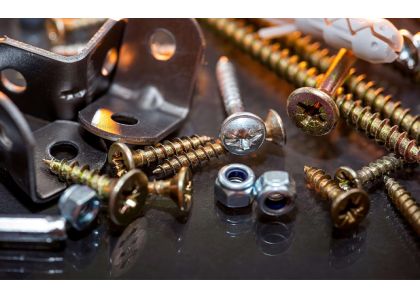
In terms of structure Screw bolt
A bolt is usually composed of a head and a threaded rod (a cylindrical body with external threads). The shape of the head varies, and common ones include hexagonal heads and round heads. The head of a hexagonal bolt is hexagonal, and this shape makes it convenient to use tools such as wrenches for tightening and loosening operations. For example, in mechanical assembly, a hexagonal bolt can be precisely torqued with a wrench to fit tightly with the nut.
The length and diameter of the threaded rod vary according to different specifications. The threaded rod of a bolt is usually a combination of a plain rod (without threads) and a threaded section. The plain rod section is mainly for facilitating the bolt to pass through the holes of the connected component during installation, while the threaded section is used to cooperate with the nut. Screw
The structure of a screw is relatively simple, and it usually also includes a head and a screw rod. The shapes of the screw head are also diverse, such as the cross-slot head (cross screw) and the flat-slot head (straight screw), etc. These head shapes are mainly designed to be compatible with different screwdrivers for operation.
The screw rod part of the screw usually has threads starting from the head, and the threads generally extend to the end of the screw rod. For example, the threads of wood screws are conical, and this design enables the wood screws to better self-drive when being inserted into wood, gradually penetrating into the interior of the wood and achieving a fixing effect.
Usage aspect Screw bolt
Screws are mainly used to connect two or more parts, and they usually need to be used in conjunction with nuts. They are widely applied in various fields such as construction, machinery, and automobiles. In the construction field, screws are used to connect steel structure components, such as the connection between steel beams and steel columns. By passing the screws through the holes on the steel beams and steel columns and then tightening the nuts, they can be firmly connected together to form a stable structure.
In mechanical manufacturing, screws are used to fix various components of machines. For example, during the assembly of an engine, cylinder head screws are used to tightly fix the cylinder head to the engine cylinder block, ensuring the sealing performance and normal operation of the engine. Screw
The application scope of screws is also very wide, but their usage method is different from that of bolts. Screws can be used alone or in combination with nuts. For example, self-tapping screws are often used to connect metal sheets, plastic products, etc. In the assembly of the shells of electronic products, cross screws are widely used. These screws can be directly screwed into pre-processed holes to fix different components together.
In the field of woodworking, wood screws are used to connect wood components. The conical thread design of wood screws enables them to adapt well to the texture of wood, and can automatically tap into wood when screwed in, tightly connecting the wood components and used for making furniture and other wood products.
Strength and performance aspects Screw bolt
Generally speaking, the strength of bolts is relatively high. This is because the design and manufacturing process of bolts focus on their ability to withstand large tensile and shear forces. High-strength bolts are widely used in the mechanical and construction fields, as they can bear large loads. For example, in the connection parts of steel cables in bridges, high-strength bolts are used to ensure a firm connection between the steel cables and the bridge structure, bearing the huge tensile force generated by vehicles and other loads. Screw
The strength of screws varies depending on their type and material. Some small screws, such as the plastic screws used in electronic devices, have relatively low strength and are mainly used for connecting lightweight materials. While some special materials screws, such as stainless steel screws, have good corrosion resistance and certain strength, they can be used in some environments with higher environmental requirements, such as the connection of outdoor equipment.